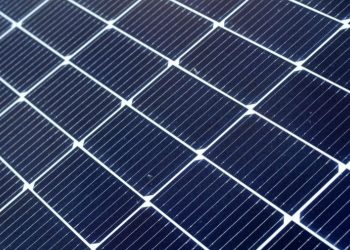The U.S. Dept. of Energy (DOE) released a new roadmap outlining solutions to speed up the interconnection of clean energy onto the nation’s transmission grid and clear the existing backlog of solar, wind and battery projects seeking to be built. The Transmission Interconnection Roadmap, developed by DOE’s Interconnection Innovation e-Xchange (i2X), serves as a guide for transmission providers, interconnection customers, state agencies, federal regulators, transmission owners, load serving entities (LSEs), equipment manufacturers, consumer advocates, equity and energy justice communities, advocacy groups, consultants and the research community, which includes DOE. The roadmap sets aggressive success targets for interconnection improvement by 2030 and outlines tools that will improve the process for connecting more clean energy projects to a reliable grid, while helping achieve the Biden-Harris Administration’s goal of 100% clean electricity by 2035.
“Clearing the backlog of nearly 12,000 solar, wind and storage projects waiting to connect to the grid is essential to deploying clean electricity to more Americans,” said U.S. Secretary of Energy Jennifer M. Granholm. “Through the i2X program, the Biden-Harris Administration is accelerating the interconnection process by ensuring all stakeholders have better access to data and improved standards and procedures as we seek to develop and maintain a more efficient, reliable and clean grid.”
According to a report recently released by DOE’s Lawrence Berkeley National Laboratory, nearly 2,600 GW of generation and storage capacity are actively seeking grid interconnection, which represents an eight-fold increase since 2014. The high volume of projects and inadequate existing procedures for interconnection has led to uncertainties, delays, inequities and added costs for developers, consumers, utilities and their regulators.
The i2X roadmap provides a broad range of stakeholders such as transmission providers, state agencies, federal regulators, equipment manufacturers and other actors with a set of 35 solutions organized around increasing data access, transparency and security for interconnection; improving interconnection process and timeline; promoting economic efficiency in interconnection; and maintaining a reliable, resilient and secure grid. The roadmap includes four target metrics for interconnection reform including shorter interconnection times, lower interconnection cost variance, increased completion rates and zero disturbance events attributed to modeling.
Over the past two years of developing the roadmap, DOE collected ideas and potential solutions through a series of stakeholder workshops and virtual meetings, along with a request for information published in October 2023 to solicit public feedback and comments on a draft version of the document. The solutions in the final roadmap include:
- Improving the scope, accessibility, quality and standardization of data on projects already in interconnection queues
- Creating new and better use of existing fast-track options for interconnection, such as surplus interconnection service, generation replacement service and energy-only interconnection service
- Adopting and implementing a harmonized and comprehensive set of generation interconnection requirements or standards
- Exploring and evaluating potential options for delinking the interconnection process and network upgrade investments to increase up-front interconnection cost certainty.
DOE support to implement solutions
DOE has multiple roles in implementing the solutions identified in the roadmap, such as facilitating solution adoption, providing funding and technical assistance, and supporting the research community. DOE’s Grid Deployment Office invests in accelerating interconnection of clean energy generation through the $5 billion Grid Innovation Program, which supports deployment of projects that use innovative approaches to enhance grid resilience and reliability. DOE’s Solar Energy Technologies Office and Wind Energy Technologies Office recently released a $10 million funding opportunity for analytical tools and approaches to accelerate interconnection and will be leading a series of forthcoming public forums aimed at implementation of interconnection standards to maintain a reliable, resilient and safe grid.
Through the Title 17 Clean Energy Financing Program, the Loan Programs Office seeks to finance energy infrastructure projects, including transmission infrastructure investments to support transmission interconnection, reconductoring transmission lines and upgrading voltage. DOE also supports electric vehicle charging deployment through the Joint Office of Energy and Transportation. The Joint Office is convening stakeholders to identify gaps that currently exist between transmission and transportation planning to accelerate the development of transmission within transportation rights-of-way.
Register for a webinar on May 8 at 1 p.m. ET to learn more about the targets and solutions in the roadmap.
News item from i2X


















